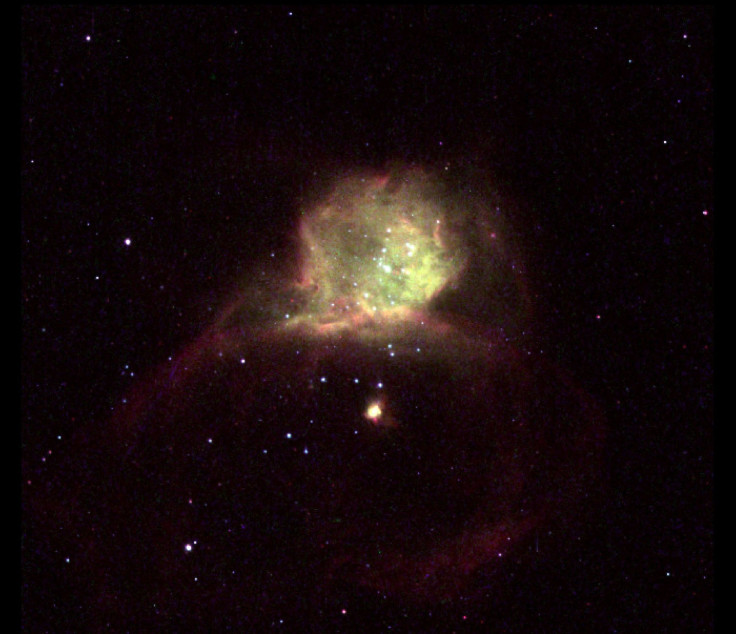NASA's Hubble Captures Stunning 'Smoking Gun' Of Newborn Star [PHOTO]

The NASA/ESA Hubble Space Telescope has obtained a stunning new image of a newborn star.
On its Twitter, NASA released the Hubble image showing the "smoking gun of a newborn star," the Herbig-Haro objects numbered 7 to 11 (HH 7-11). Visible in blue in the top center of the photo, the five objects are located in a reflection nebula full of gas and dust called NGC 1333. The nebula is around 1,000 light-years away from us, according to NASA's website.
#HubbleFriday Hubble has captured the smoking gun of a newborn star! These five objects, visible in blue in the top center of the image, lie within NGC 1333, a reflection nebula full of gas and dust found about a thousand light-years away from Earth: https://t.co/y9erxz69kz pic.twitter.com/CBaBreyexs
— Hubble (@NASAHubble) February 15, 2019
Herbig-Haro objects like HH 7–11, which are described as "bright patches of nebulosity near newborn stars," will not be around as long as most objects in the universe. These objects move away from the star from which they are born at a speed of up to 150,000 miles per hour (241,400 kph) until they eventually vanish into the cosmos in a few tens of thousands of years.
HH 7-11 came from a star named SVS-13, and in the image, the five objects are traveling away from this star toward the upper left. At the moment, HH 7's distance from SVS-13 is around 20,000 times the distance between the Earth and the Sun.
Named after American astronomer George Herbig (1920–2013) and Guillermo Haro, Herbig-Haro objects are created when narrow jets of partially ionized gas ejected by a young star collide with nearby clouds of gas and dust at speeds of several hundred kilometers per second. The Herbig-Haro objects in the new Hubble image were also formed in the same way, after jets from newborn SVS-13 collided with the clouds surrounding it. The result of the collisions is five brilliant clumps of light within NGC 1333.
Back in 2012, the Hubble also managed to capture another Herbig-Haro object, the HH 110. However, this particular HH object was unique from most others of its kind as it appears on its own rather than as a pair.
In the image obtained by Hubble, the HH 110 appears as a geyser of hot gas streaking across the frame. The jets are not being blown through a pure vacuum, so when they slam into colder gas, they create shock fronts that resemble and move in a similar way to the bow waves that form in the front of a boat, according to NASA's website. These "bow shocks," which appear to glow due to very high temperatures, are a distinctive feature of HH objects.
The structure of HH 110 and other objects like it are significant as they act as a recording of the activity of the star that is the origin of the jet. The star can produce erratic outbursts when more matter is falling in, and these moments are recorded as brighter knots or blobs within the HH object, which travel along the jet over the years.
In the image released by Hubble, the streamer of gas is about half a light-year in length, since they are very large despite being very fast-moving. So from our perspective, the motion looks very slow even when measured over years.
Studying Herbig-Haro objects can help scientists learn more about star formation and the environment directly around newborn stars.
© Copyright IBTimes 2024. All rights reserved.





















